Colorado in Review
/With railroad grade tracks, cool mountain towns ready for the outdoor enthusiast, and lots of national forest, Colorado felt like a breeze. Just watch out for the elevation!
Read MoreWith railroad grade tracks, cool mountain towns ready for the outdoor enthusiast, and lots of national forest, Colorado felt like a breeze. Just watch out for the elevation!
Read MoreComfort versus weight. Ramen versus real meal. Cold versus lightweight. This for that. This post is all about some of the gear and compromises I made.
Read MoreThis is overdue. But good news for the readers, it'll be a shorter article. Sike. There's a gallery in case you don't feel like reading.
Wyoming surprised me. The place, the climate, the terrain, the people... all blew up my stereotypical ideas of Wyoming.
I'm not sure why, but I thought all of Wyoming was going to be flat, hot, dry, and windy. Something about cowboys and ranching. I was pleasantly surprised to find that much of the northern section is quite hilly, forested, and full of thermal activity. (Yes, like Yellowstone.) It made for an interesting nostalgia... the smell of warm sulfur kind is reminiscent of the beach. It's quite the transportive moment... when you think you're going to ride straight onto a beach.... in Wyoming.

Just before Togwotee Pass
Also, it just wasn't as windy as I thought it would be. Sure, there was that one day in the Wyoming Basin where you basically had to point your bike diagonally across the road to keep going straight, but that was the outlier day.
The humidity was low, of course, but the overall temps were mild. Perhaps it was a fluke, but there was only one day in the Basin that really felt like a threat.

I've got to say that between the touristy mountain towns of Canada and Montana and the miles of clear-cut forest in Montana, Wyoming was refreshingly untamed. Perhaps there were just no forests to be clear cut, but there were miles upon mile upon miles of nothing but rolling hills, plateaus, and plains of sagebrush. No houses, no gas stations, no nothing. Just you and the land. If my subconscious had an Inception-like layer, that would be it.

I also saw the most wild of creatures in Wyoming. A whole herd of Elk, loads of antelope bounding across the plains, and even a pack of wild horses. Wild horses, you should know, behave VERY differently than domesticated horses. They actually NOTICE when someone is around, and act very alert, and stamp and swish their tail; ready to run at any moment.
The stars are something else out there. If you have to get up in the middle of the night, it's usually the most annoying thing. But out there, you're rewarded with the Milky Way splashed across the sky and a hundred other bright stars that make you forget you had to get out of your sleeping bag for this.
Only Alaska has a smaller population density than Wyoming. The CITY of Philadelphia is THREE TIMES larger than the entire state of Wyoming. Most Wyoming residents like it that way. They don't want you do know that Wyoming doesn't have an individual or corporate income tax, nor does it assess any tax on retirement income earned in another state. How bout that!?
But just because they love Wyoming doesn't mean they don't travel around. The people I met along the way were well-traveled and well-versed in the ways of the world. Many people didn't go to college, but had well-balanced views on the world nonetheless. I can't begin to tell you how impressed I am with the people of Wyoming. It's like all the things that people typically have opinions about because they read something in the news, the people of Wyoming have opinions because they've been there. Military, oil and gas workers, hunters, fishers, fly-fishers, cooks, bartenders, hiking guides, ranchers... you name it, they've done it here, there and everywhere. I met a man in Savery, Wyoming that worked in Afghanistan. I met a dishwasher who served in the military but then went on to be a sky dive instructor in Central America. I met some locals who went on a fishing trip in Alaska, and hosted a huge fish fry pot-luck to share the bounty with the community. I met a bartender who moved to Alaska to work at a mine after living for 10 years in Spain because he "woke up one morning in a too perfect coastal town and thought 'is this it?'"
But community doesn't come easily sometimes. I met a woman from Vermont who was still considered a newcomer after 20 some odd years. I stayed the night in the town of Wamsutter that basically booms and busts at the will of the natural gas industry. Regardless, I always felt welcome, and I always felt like I could listen to what the people of Wyoming had to say without ever getting bored.
I'll do a separate post on the Basin, but here's a nice, rambling, non-sequitor comparison of these two famous places in Wyoming. At times, they couldn't be more dissimilar.
That about sums up my Yellowstone versus Wyoming Basin comparison.
In general, I'm still enchanted with the solitude, character, and beauty of Wyoming. But I'm going to be honest, Colorado still has my heart.
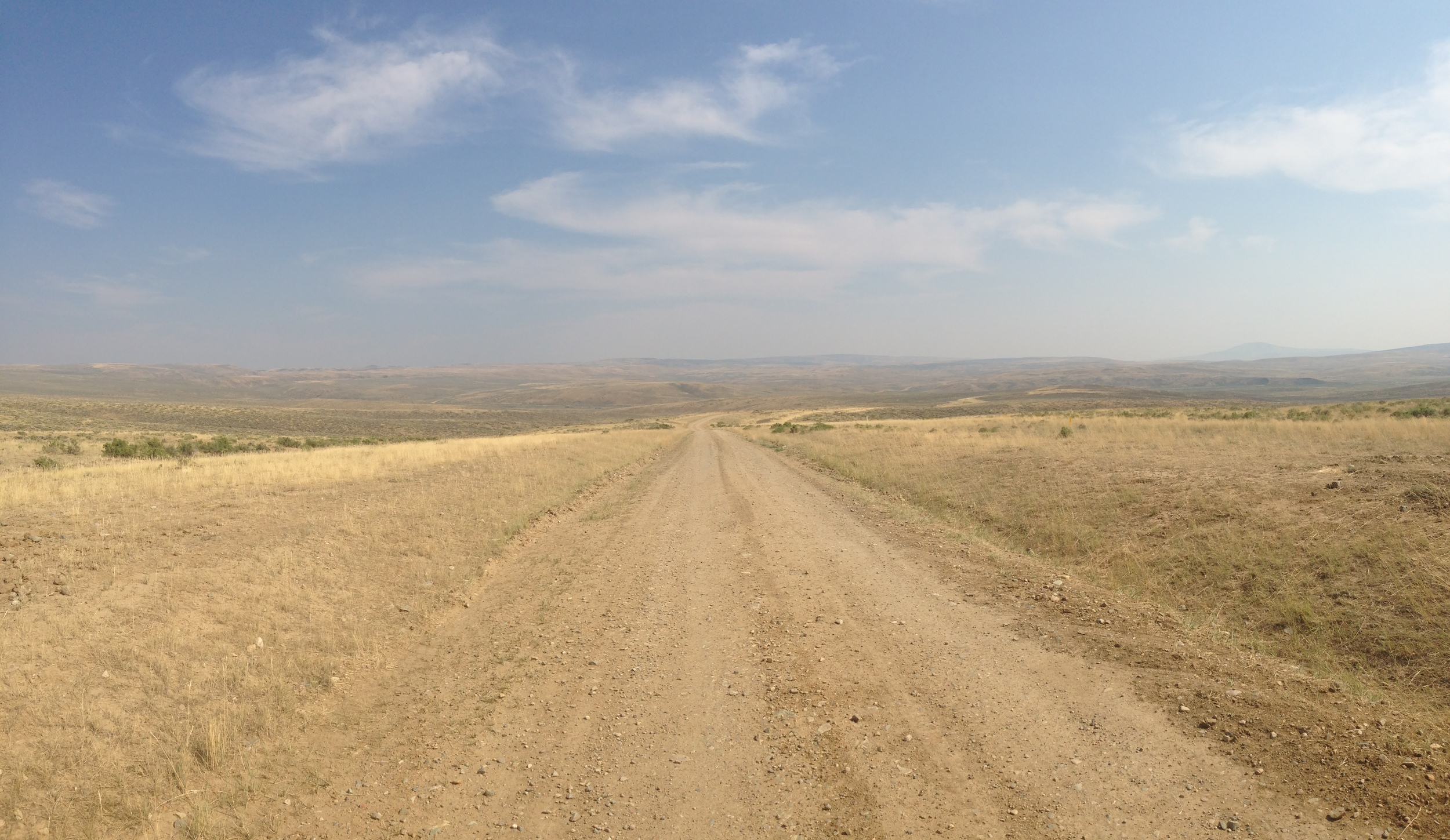
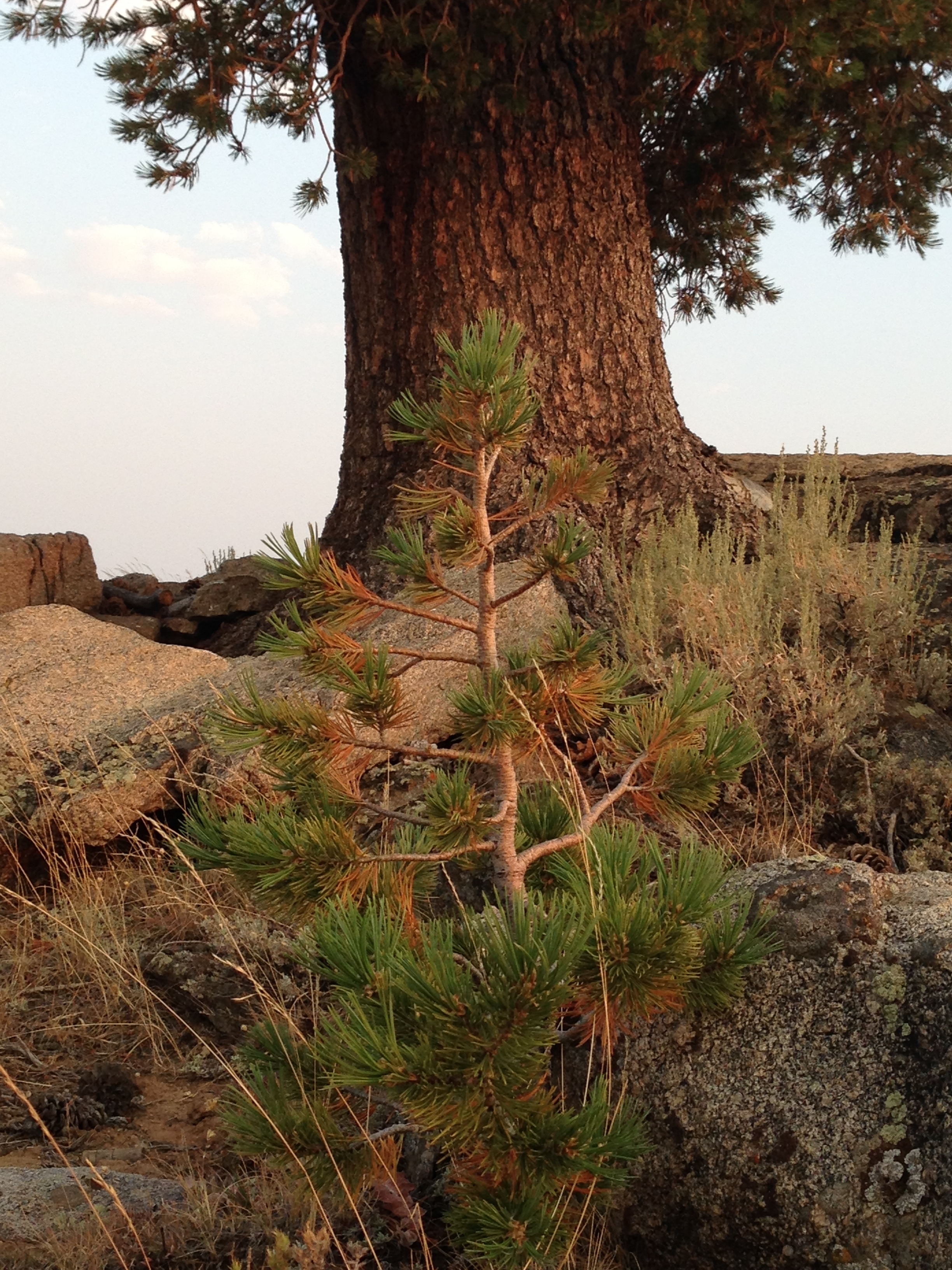
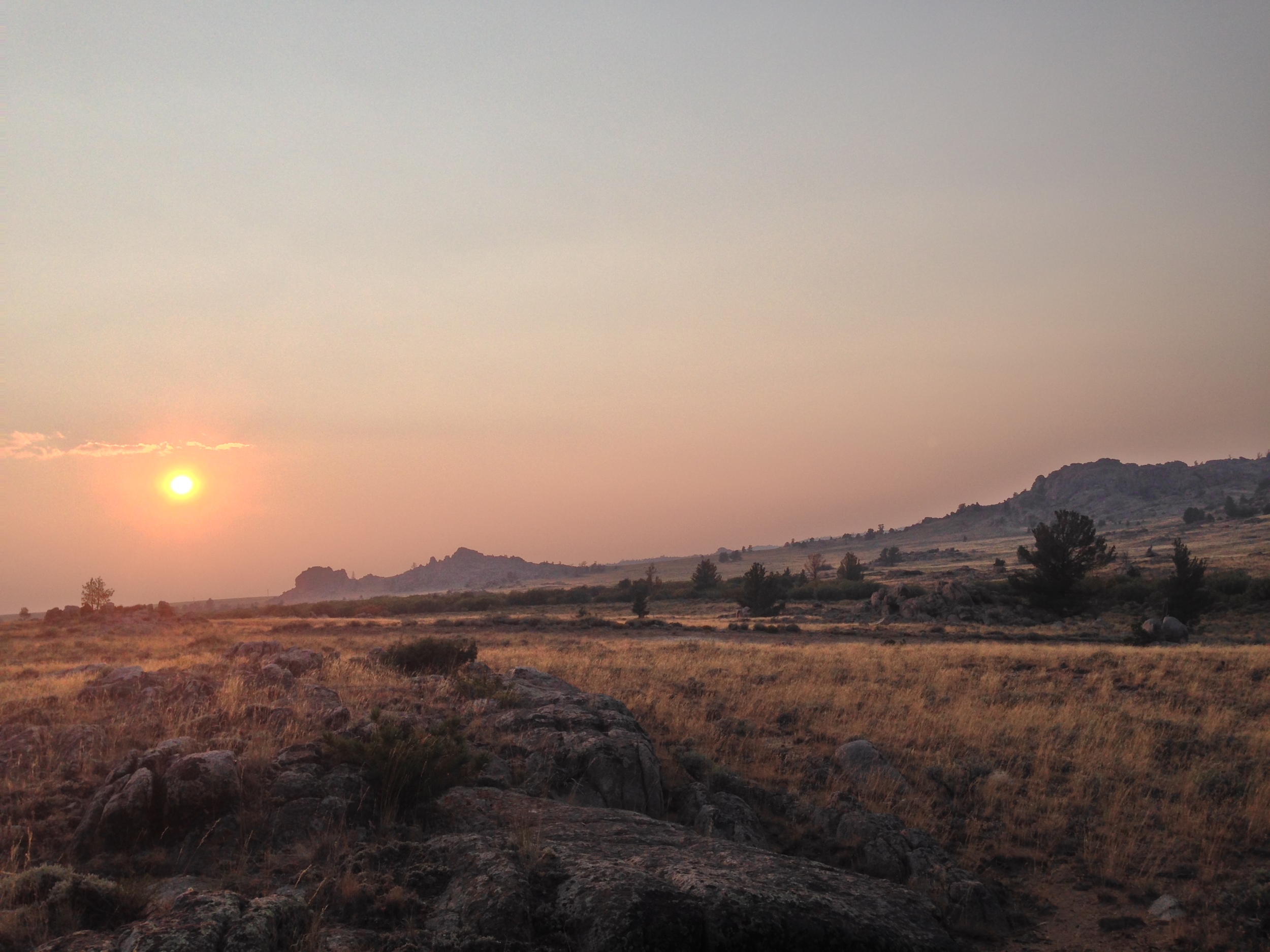
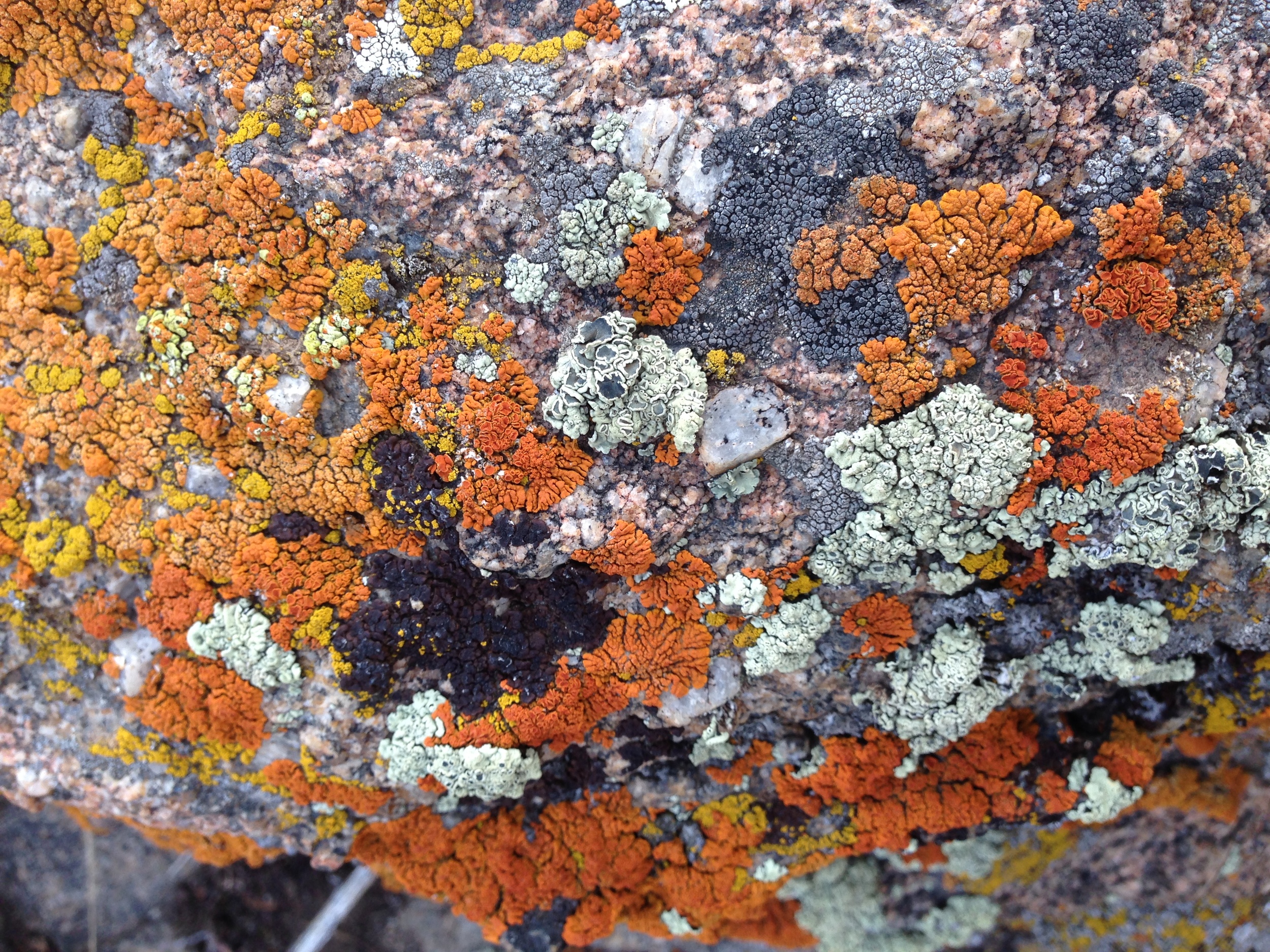
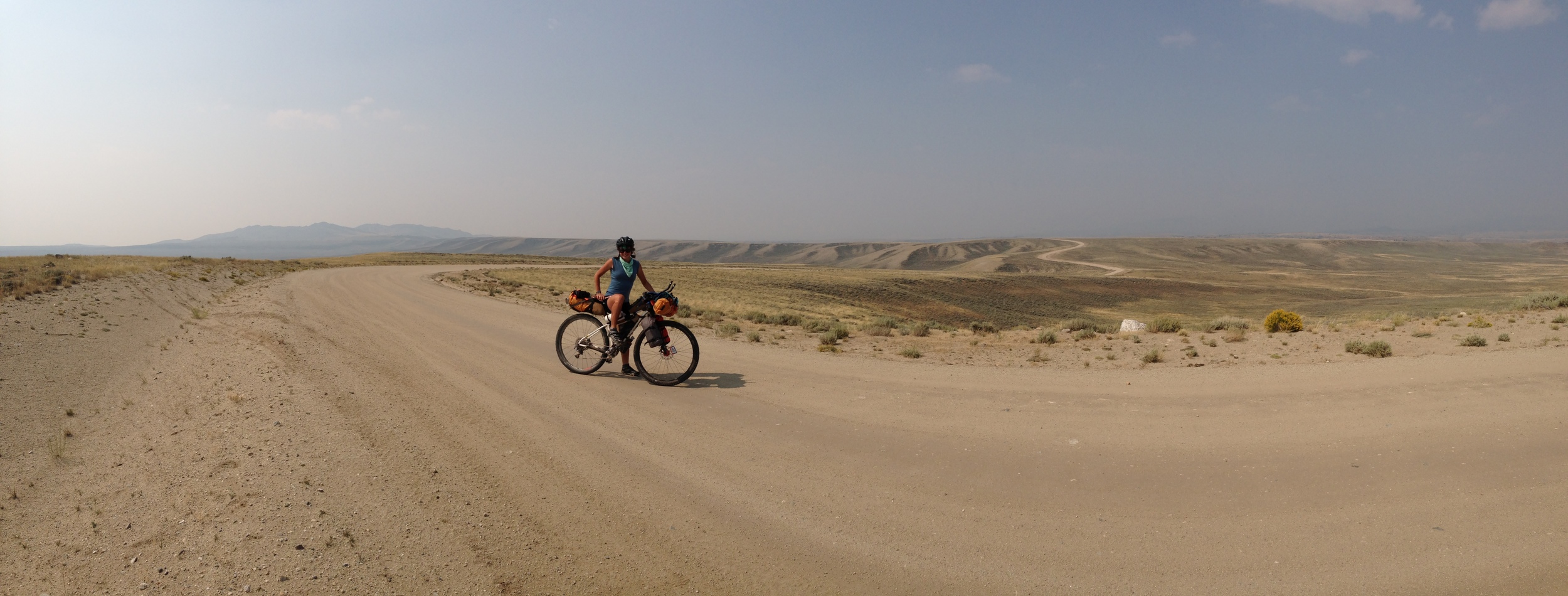
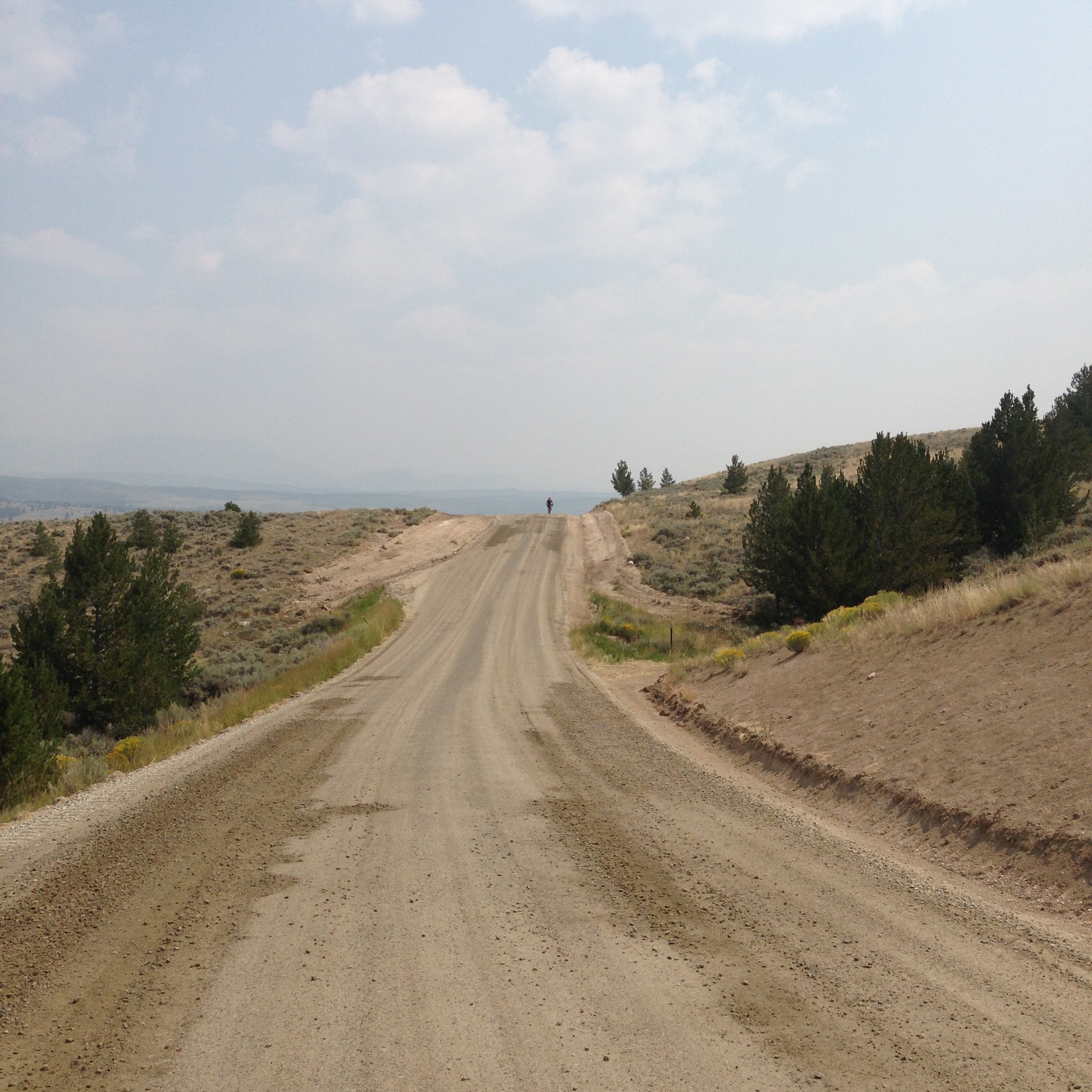
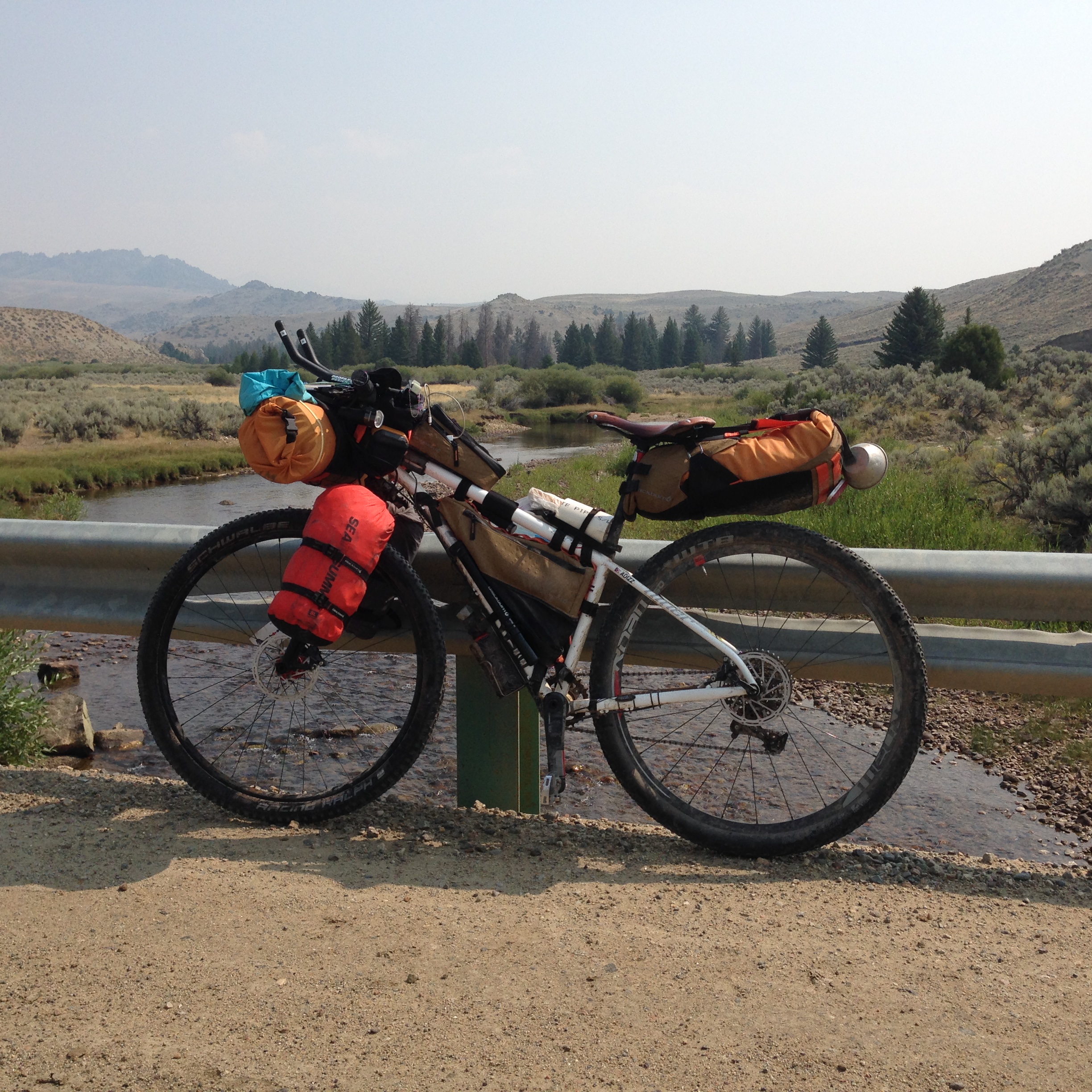
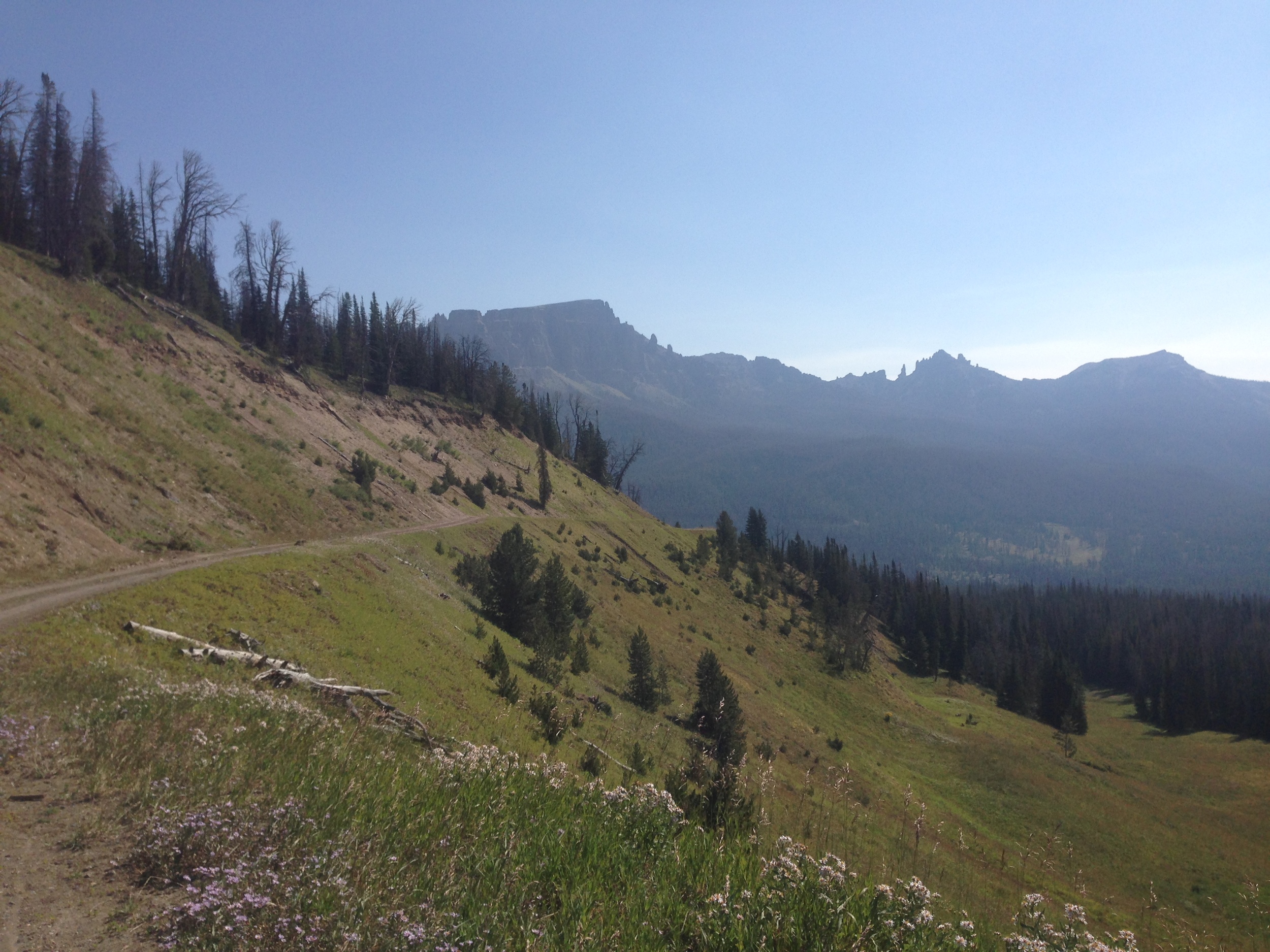
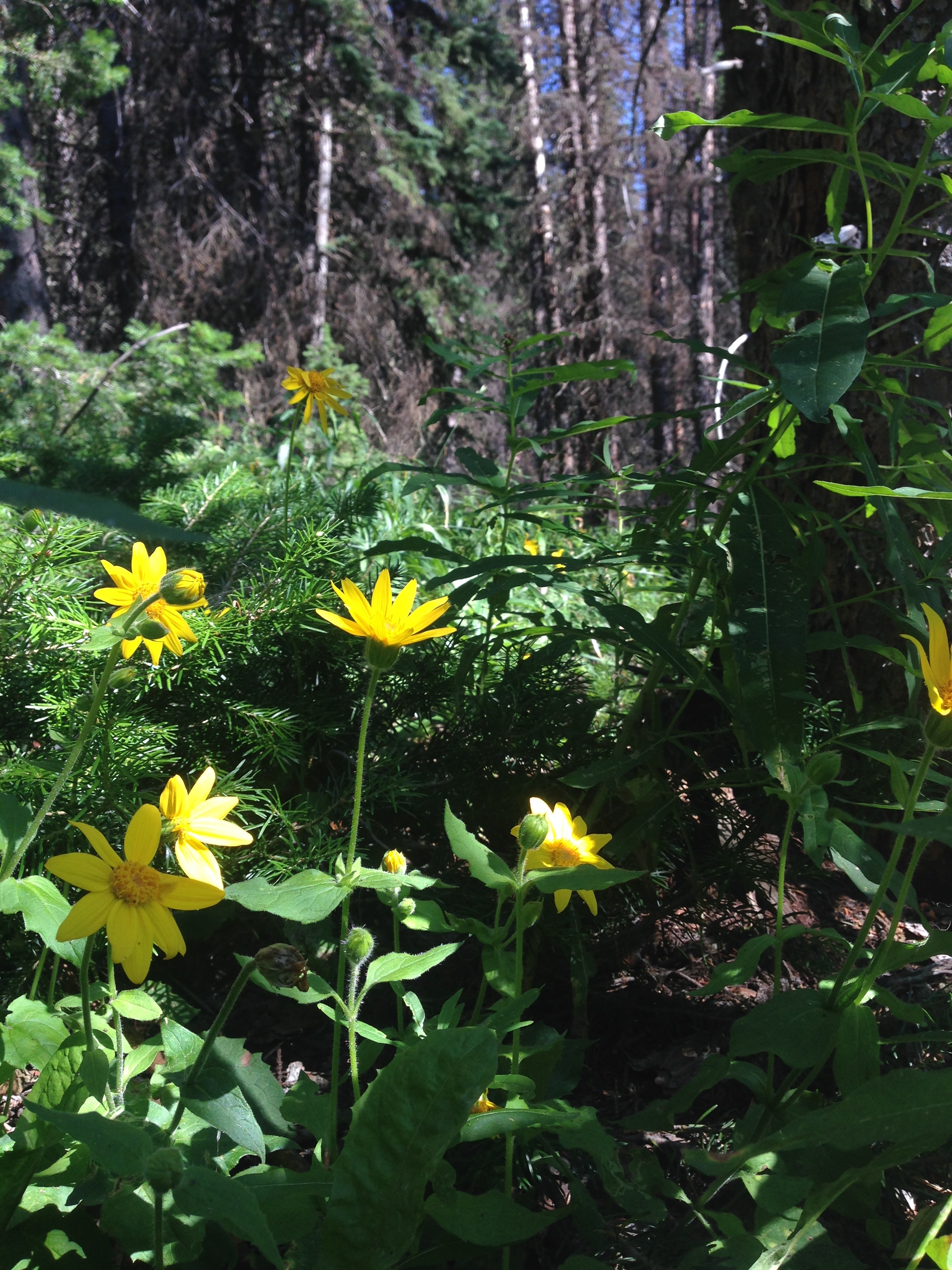
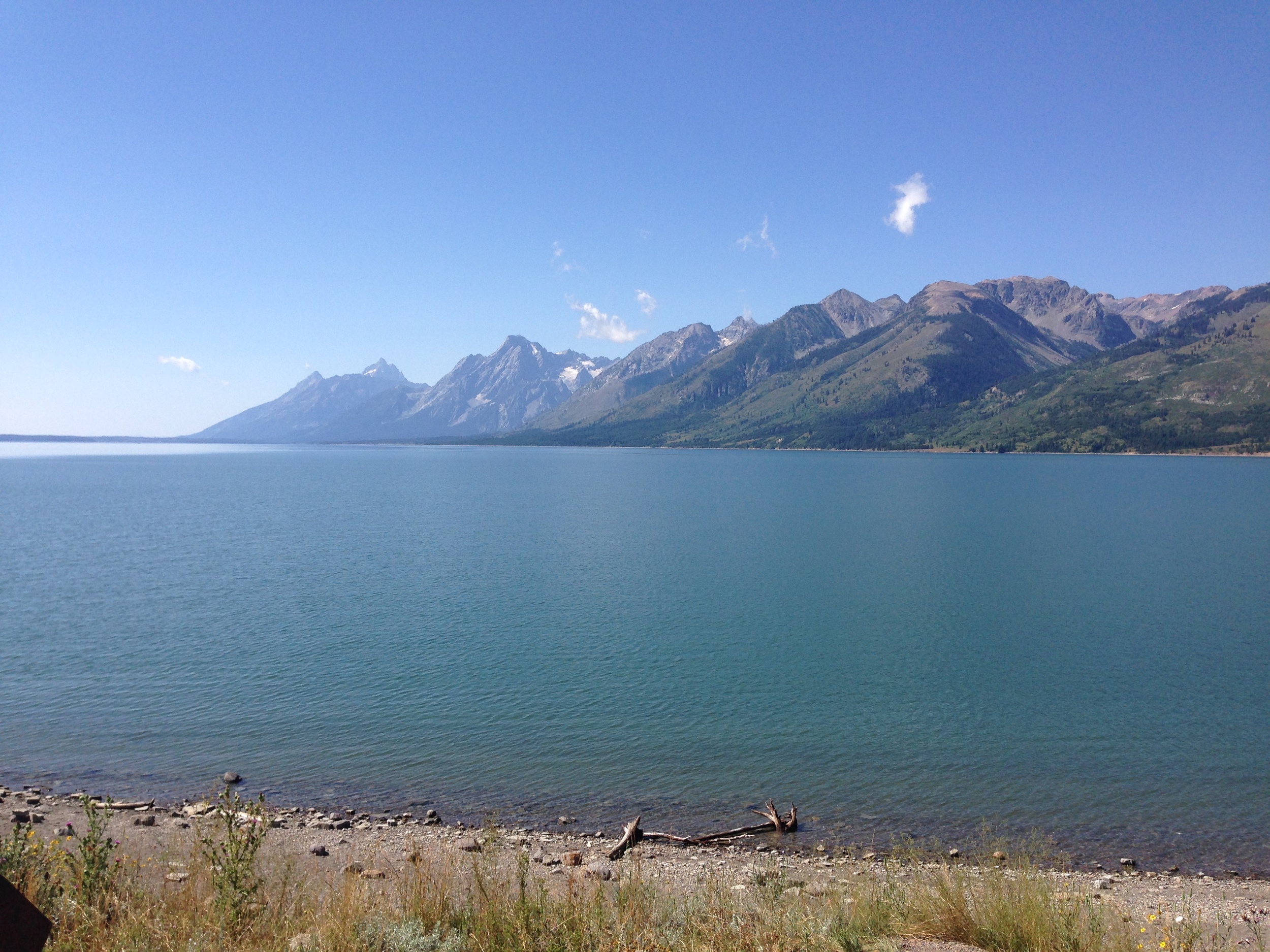

By request, I'm bumping this post up over one about Wyoming and the Wyoming Basin, which is likely to be a little long and borderline sappy.
I can speak to a few aspects of hydration systems, and will direct you to other resources for more comprehensive information. I'll break this into two parts, water vessels and water filtering devices. Of course there is some logical overlap, but here it goes...
I'm talking about the things from which you actually drink. In my opinion, you have two options: water bottles and water bladders.
I have only a few good things to say about water bottles. Here they are: water bottles are good for squeezing water out of fast and in a very specific direction. This only seems to be very important when you are trying to clean peanutbutter mud off your chain.

Times that call for forceful water projection are hopefully few and far between.
Water bottles are also good for .... Um. Well that about sums it up. I'm not saying it can't be done. It's cheaper to put 4 bottle cages on your bike if you already have the eyelets than to buy a frame bag. So take my advice with a healthy dose of your own perspective.
Water bladders are superior to bottles for two important reasons: carrying capacity and ease of drinking. Most cycling water bottles are 21-26 ounces, or 0.62-0.76 liters. At this rate, you're going to want about 3-4 water bottles to have about 2 Liters of water on you at any time. Volume of water is personal preference. I find that keeping 0.5 - 1.5 liters on me keeps me going between water sources. You might want more. One advantage of water bladders is that they tend to be sized at 1 liter or more. Right away you're getting more water per vessel.
The other advantage is being able to stuff them in a frame bag, backpack, or other hiding spot quite easily. With an appropriate length hose attached, you should be able to drink water at any time with minimal hassle. (Reaching for a water bottle while riding on washboard just isn't comfortable.) Make sure your hose is long enough to run to your mouth without too much craning from your frame bag. Most hoses are designed for backpacks, not frame bags.
The negative to water bladders is that they're less durable. They're more likely to get a small hole or wear easier than a water bottle. Make sure the place where your water sits isn't too crowded with extra junk to prevent rubbing or punctures. Have super glue and fabric tape handy to fix leaks.
Compatibility with your bikepacking system is important. If you're putting water in your frame bag, bladders like Camelbak or Osprey may not work because of the rigid components like the circular "lid" or the stiff "spine" of the Osprey bladders. This is why I found Platypus bladders to work well. The Hoser line of bladders means the bladder is malleable, all around. HOWEVER, this doesn't mean you should be habitually folding your bladders in your bags. I found that repeated folding tended to cause more wear on the bags over time. If you have a small frame bag like me, you're better off buying two, 1 liter bladders and nestling them in side by side instead of buying one, 2 liter bladder stuffed or folded in the bag. I had one bag fail because of folding; Platypus hooked me up at the next town for free.
Lastly, the clear Platypus bags seem to hold up better over time than the colored ones, but I have yet to have a leak in the colored bag. It just looks like it has been through hell and feels more papery than the clear bag (as if a finish had worn off).
I'm using a gravity filtration system. There's a decent comparison page for water filtration systems on Outdoor Gear Lab: http://www.outdoorgearlab.com/Backpacking-Water-Filter-Reviews
I've been really happy with the Platypus GravityWorks system; I've also seen people really pleased with the MSR Sweetwater Microfilter. While I'm traveling in foreign countries, I use the First Need filter as it treats some viruses in addition to bacteria. On the divide, you mostly just need to address bacteria from cattle grazing.
I was a little worried that I wouldn't be able to get enough water in the Platypus Dirty bag along the route (say for example that there's only a puddle of scummy water that you need to drink from). However, I've found that the water sources along the Divide (even in the middle of summer) are volumous enough and frequent enough to always fill the whole 2L bag with no real issues.
It also works quickly. It'll filter 2 liters of water in about 3-5 minutes. And as the name suggests, gravity does most of the work for you. You'll filter water into your clean Platypus bladder, or into your friend's water bottle, or right into your mouth if you feel so inclined.

My friend demonstrates proper technique for drinking water straight from the filter.
So do your own research to see what solution works best for you, but I hope this helps answer some not-easily found answers.
Oh, one more thing:
I wear a backpack only when I need to carry more than 2 liters of water at a time (aka Wyoming Basin) . My friend who traveled with a backpack through Wyoming said that if he had to do it over again he would've made the backpack a less essential part of his gear setup. So there you go. Some empirical evidence.
As usual, I'm sure this post is not going to be news for many experienced bikepackers, but for those of you who are looking for clues, I hope this can contribute to your personal solutions to staying clean in the backcountry.
For one, saddle sores can break a trip, and your best defense against saddle sores is a good saddle and good hygiene. (If you don't know what I mean by saddle sores, I'll let you Google t yourself.)
Bikepacking presents its unique set of challenges and opportunities. On one hand, you often don't have access to showers... Or they are overpriced at campsites. On the other hand, you are more likely to be in a remote place off of a trail and close to a natural body of water.
I'm not a doctor or a professional bikepacker (no such thing), but I've been on the trail for a month and found the following things to be successful and important to staying somewhat clean and saddle sore free.

Wash your bike shorts every day and hang them to start drying overnight!

Alcohol based hand sanitizer works for other parts of the body in a pinch, tea tree oil and neosporine are good for saddle sores, and Dr. Bronner's (shown here in a soft bottle) is a good, mild, soap for cleaning yourself and your clothes.
Alright. That about wraps it up on the hygiene front. It's off to bike Colorado! I'll be posting about Wyoming and the Wyoming basin soon enough.

Shorts drying on the back rack after washing.
One of the biggest surprises I've had on this trip has been the openness, kindness, and generosity of people I don't know. I won't call them strangers, because it seems too harsh a word.

The SIR 9 upon entering Wyoming... The bike itself attracts curious passers-by.
Despite the somewhat heavily traveled continental divide, I've been surprised how many people strike up a conversation with me simply based on the appearance of my bike. I have to remember that Bikepacking is novel to many people, and to whom it's not, they are excited about it. So just that in itself open doors.
I won't name them all now, but I will talk about a few... Just so you get the picture.

There was Dan and Lani in Helena, Montana. After being beaten into town by a pace line of Dutch riders (otherwise known as "Team Holland"), Jeni and I were looking for a bike shop that sold Platypus bladders, because I'd gotten a hole in mine. Dan at Great Divide Cyclery (406-443-5188) answered the phone after hours, and told me to come by anyway. Jeni and I explained that we hadn't found the campsite yet. Dan (the owner of the shop) explained that the site was miles out of town, and the couple offered up their backyard, and then their spare bedroom for us to stay the night. In the morning, Dan let us do a little bike maintenance on the deck and he made us smoothies. UNREAL.

Supposedly the secret is good Greek yogurt.
I should mention that 2 other people in the town of Helena offered us a place to stay as well after they heard we were bike touring. Something is going on in that town.
Then there was Casey who worked with the Centennial Outfitters whom we met in at Jan's cafe in Lima over breakfast (yes we are there for dinner the night before too). He advised us on back road conditions after a huge downpour, and gave us the number for the lodge along the way.

We followed a rainstorm for 30 miles then finally called it quits.
Turns out, it was the rainiest, muddiest day that we ever had. We stayed the night at the Centennial Lodge, were given a dinner, and Seth (a 13 yr old cowboy) basically tended to all our needs and told us all about outfitting. Casey helped us get a jump on the next muddy section of road the next morning, and we were able to do 85 map miles in only 70 miles that day. (Jeni and I were on a tight timeline to get her to Jackson in time for her flight home.) He was going that way, but took the time to get our bikes on the truck.

Jeni's bike tied to the horse trailer and mine in the bed of the truck.
The second to last day of her trip, Jeni went rubber side up on a gravel descent. She bit the gravel pretty good, got a mild concussion and a bunch of deep wounds. Luckily, we were riding with 4 other riders at the time (we were going through the grizzly relocation area... safety in numbers), so there were plenty of people to help. A car of vacationers took Jeni the 10 miles to the nearest establishment. After much figuring and some cursory check up work by the forest rangers, Jeni and I decided to get down to Jackson, Wyoming that night to have access to better medical services. There aren't many pictures of her wounds becausewe had so many other things to think about.

Jeni getting checked over after going rubber side up
Namely, Jackson is one of the most expensive mountain towns I've ever been to, and we had nowhere to stay. We were just booking a very expensive hotel room when I proposed we wander into town to get some food and see who was around. Literally the first people we run into start asking us about our bikes and what we are doing. When they heard about Jeni's accident, they pretty much immediately offered up their vacant RV and hotel shower. Turns out, they'd done some bike touring themselves and Ann had been in a bike accident the year before. They went above and beyond what most people would probably do on their vacation... They gave us a free place, a warm shower, and a sense of comfort.

Ann and Ken and their awesome RV

The Green Berets are cycling across the country to raise money for PTSD.
In more recent history, a new cycling buddy from Philly has joined me on the Wyoming leg of the trip. Damien unfortunately aggravated his Achilles on the first day. We stayed in a lodge for a whole day to give him a chance to heal, but then decided to press on the next day. The plan was that I would ride to the top of the pass, and Damien would get a ride to spare his Achilles. Turns out, it was rough trying to hitchhike with a fully loaded bike. After 3 long, demoralizing hours, a cyclist came up the road. He was a green beret, and was cycling the county to raise money and awareness for PTSD. Not but a few minutes before a super cool sag wagon with a open spot on the bike rack had ridden by. Fortunately for Damien, the sag wagon turned around and gave him a lift not just to the top of the pass, but to the lodge where I was waiting for him. They were a huge help in getting Damien back in the bike.

Giorgio the bartender, helping Damien make hitchhiking signs
Then there are your regular bike trail saints, who offer up a cabin for cyclists passing by. These peoples are not totally uncommon. (Although always appreciated!) to give you an idea, an ACA map side is about 200-250 miles per side. On each map side, you'll pass about 2 houses hat have opened their doors or cabin to cyclists.
John and Lucky Fandek are one such couple. Their tiny cabin fits a couple comfortably, or a pair uncomfortably, or a couple at odds uncomfortably as there is one bed and some floor space. I should have a picture gallery just for their cabin but I don't have time for that. We talked to John and he said he gets about a half dozen people every year to stay.

The Niner in front of John and Lucy Fandek's cabin.